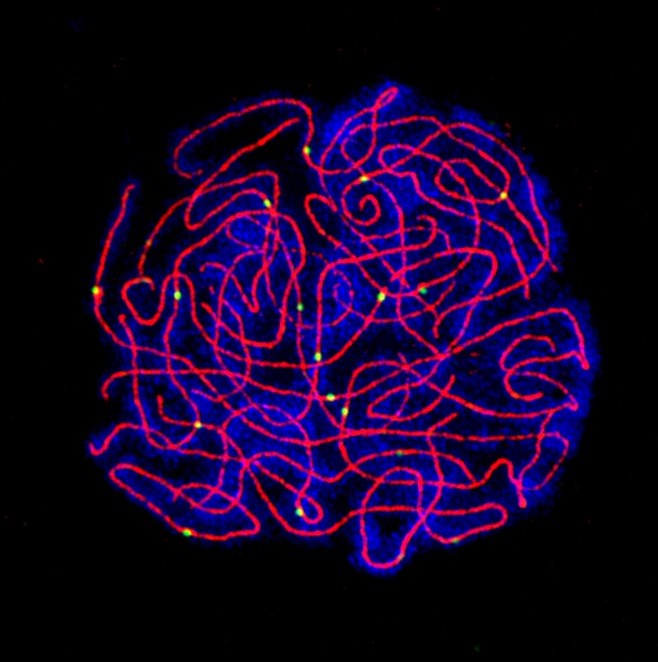A tango with four: Evolutionary modification of crossover interference enables stable autopolyploidy
How do you do meiosis with four copies of every chromosome instead of two? A recent "Current Biology" paper by the Bomblies group (IMPB) with collaborators Nancy Kleckner (Harvard) and others, presents a new model suggesting increased crossover interference is key in stabilizing polyploid meiosis.

Even chromosome segregation in meiosis, the cell division that produces gametes, is essential for fertility in the vast majority of eukaryotes. The duplication of an entire genome, which leads to polyploidy, presents an important challenge – how do you segregate chromosomes when more than two copies are present? The solution could give important insights into genome stability, chromosome segregation, and how the process of meiosis itself can be modified in evolution. Moreover, polyploidy has contributed to evolution of many eukaryotic lineages, so understanding how they can stabilize to form lineages that persist is also important.
Thus far, what exactly goes wrong in autopolyploid meiosis, and how autopolyploids can evolve to fix it, has been largely mysterious. A recent study from the Bomblies group (IMPB), with collaborators Nancy Kleckner (Harvard) and others, presents a detailed immunocytological analysis of diploids, newly formed autotetraploids (4 chromosome copies but a diploid genome), and natural evolved autotetraploids to study how chromosome segregation can become regular in a novel context. The work presents a new model for autopolyploid meiotic stabilization based on the phenomenon of crossover interference (a process by which DNA recombination events in meiosis are prevented from occurring too near one another). The study also shows that the solution to tetraploidy pre-adapts meiosis to be stable also in octoploids (with 8 copies of every chromosome).
Link to the paper in external page Current Biology